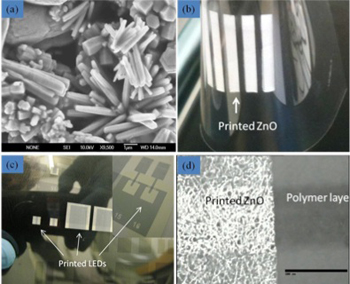According to a doctoral thesis released by Gul Amin of Linköping University, white LEDs made from zinc oxide (Zn02) and a conducting polymer can be manufactured directly on a piece of paper.
Nanostructures of Zn02 have a number of characteristics that make them suited to the manufacture of white LEDs, among them a large bandgap and a natural white-light emission.
The active components of Amin's emitters are nanothreads of Zn02 on a thin layer of polydiethylflourene (PFO), a conducting polymer. (The paper must first be coated with a thin, water-repellent, protective, and leveling layer of cyclotene, a resin.)

“This is the first time anyone has been able to build electronic and photonic inorganic semiconducting components directly on paper using chemical methods,” says professor Magnus Willander, who is leading the research. The article has been published in Wiley’s physica status solidi -- Rapid Research Letters.
In one of the thesis’ other articles, published in Springer’s Journal of Material Science, Gul Amin shows how it is possible to grow Zn02 nanothreads on paper, blow them off the surface using ultrasound, and collect them in the form of a powder. This powder can then be used to print the nanothreads of Zn02, and thus LEDs, on paper or plastic in a normal printing press. The method has patents pending, with an application by Gul Amin along with Ecospark (also in Norrköping) and Acreo (Kista, Sweden).
Since Zn02 is an n-type natural semiconductor (with a surplus negative charge due to defects in the material), Gul Amin combined Zn02 with p-type copper oxide (surplus positive charge) to create several different types of electrochemical sensors.
Following his doctorate, Gul Amin returned to his native Pakistan to pursue his research, but at the Physical Electronics and Nanotechnology group the potential of Zn02 is being further explored, in combination with graphene, copper oxide, and other materials.












